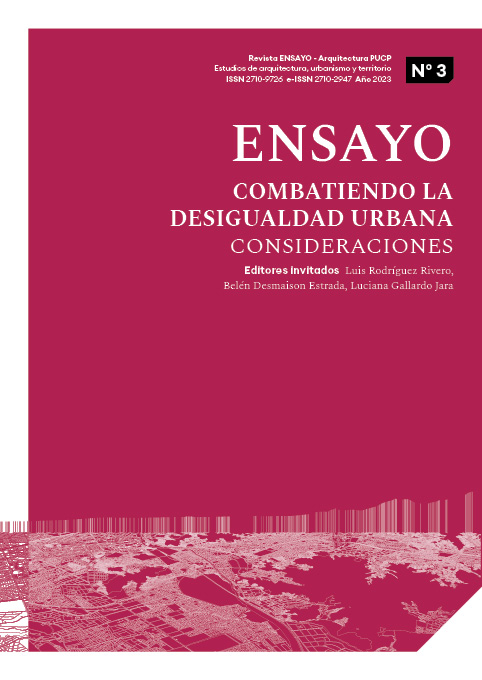La arquitectura como medio de empoderamiento cívico
DOI:
https://doi.org/10.18800/ensayo.202303.005Palabras clave:
Arquitectura participativa, Cooperación, Hábitat social, Desarrollo, LocalResumen
En el Perú resisten 48 lenguas originarias, 11 regiones ecológicas, 84 de los 117 las diferentes «Zona de vida» en el mundo. ¿Podemos los arquitectos operar desde una acción activa y participativa con respeto y fortaleciendo el hábitat social y así combatir la desigualdad? Si la arquitectura es un arte que genera espacios para vivir mejor, los arquitectos tenemos la responsabilidad de conocer y respetar el territorio y a las personas, para proponer espacios que representen la cultura y el espíritu de cada lugar.
Sin embargo, en las ciudades vivimos entre muros físicos que resaltan las desigualdades y visibilizan el miedo que tenemos al otro. En las zonas periféricas y, aún más, en las zonas rurales del país, contribuimos a un sistema que abandona a las comunidades más vulnerables. Frente a este escenario, es que pensamos que el primer muro que tenemos que derribar es el muro en nuestras mentes, y esto es posible sólo a través de un igualitario acceso a la educación. Por ello, nos interesamos en proyectos de arquitectura educativa: la escuela, el primer lugar después de la casa, en el que el niño se desarrolla aprendiendo en sociedad.
Descargas
Descargas
Publicado
Cómo citar
Número
Sección
Licencia

Esta obra está bajo una licencia internacional Creative Commons Atribución-NoComercial-CompartirIgual 4.0.





